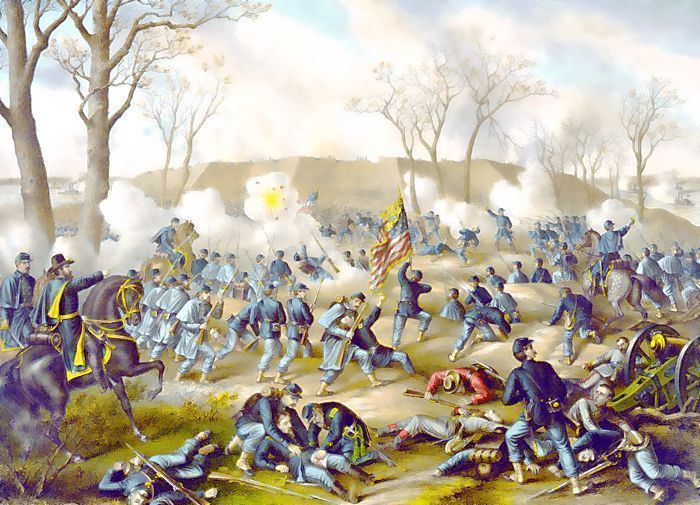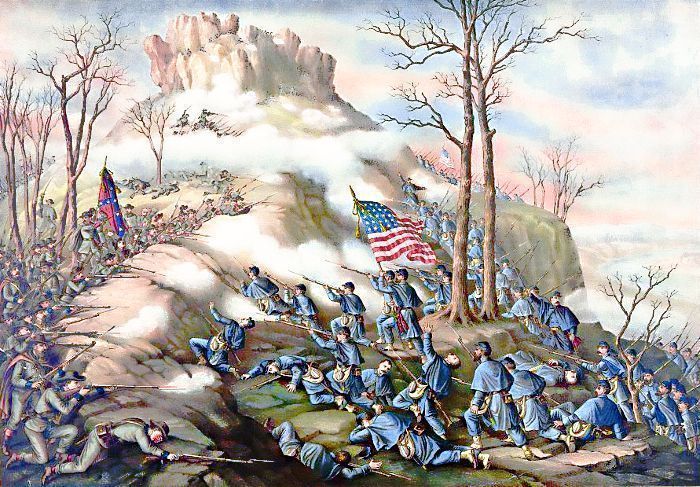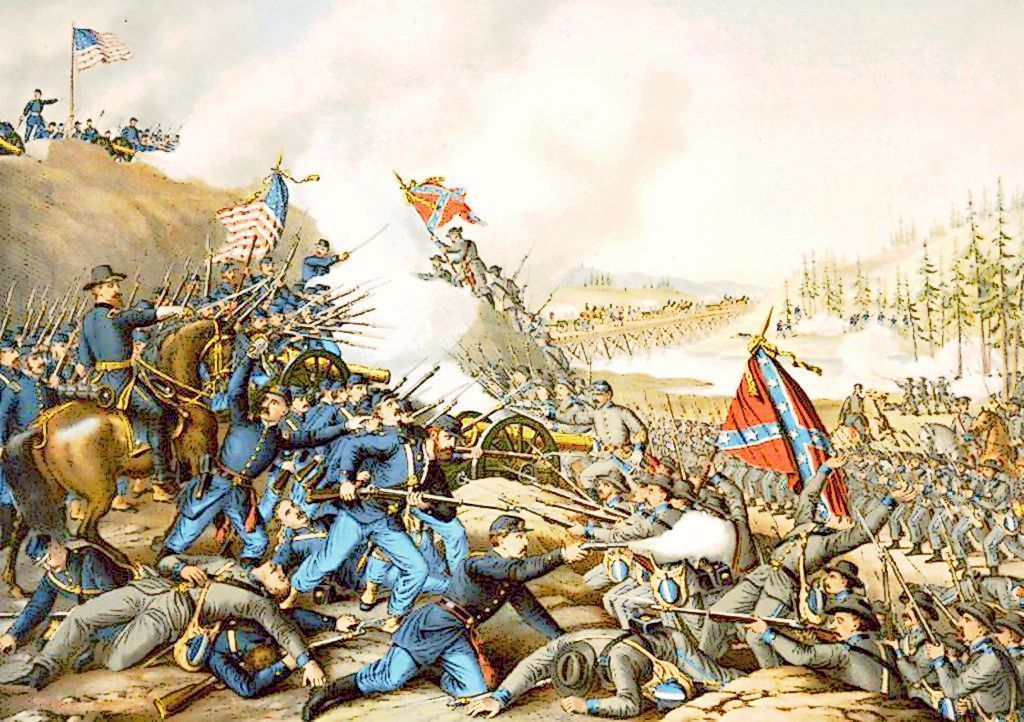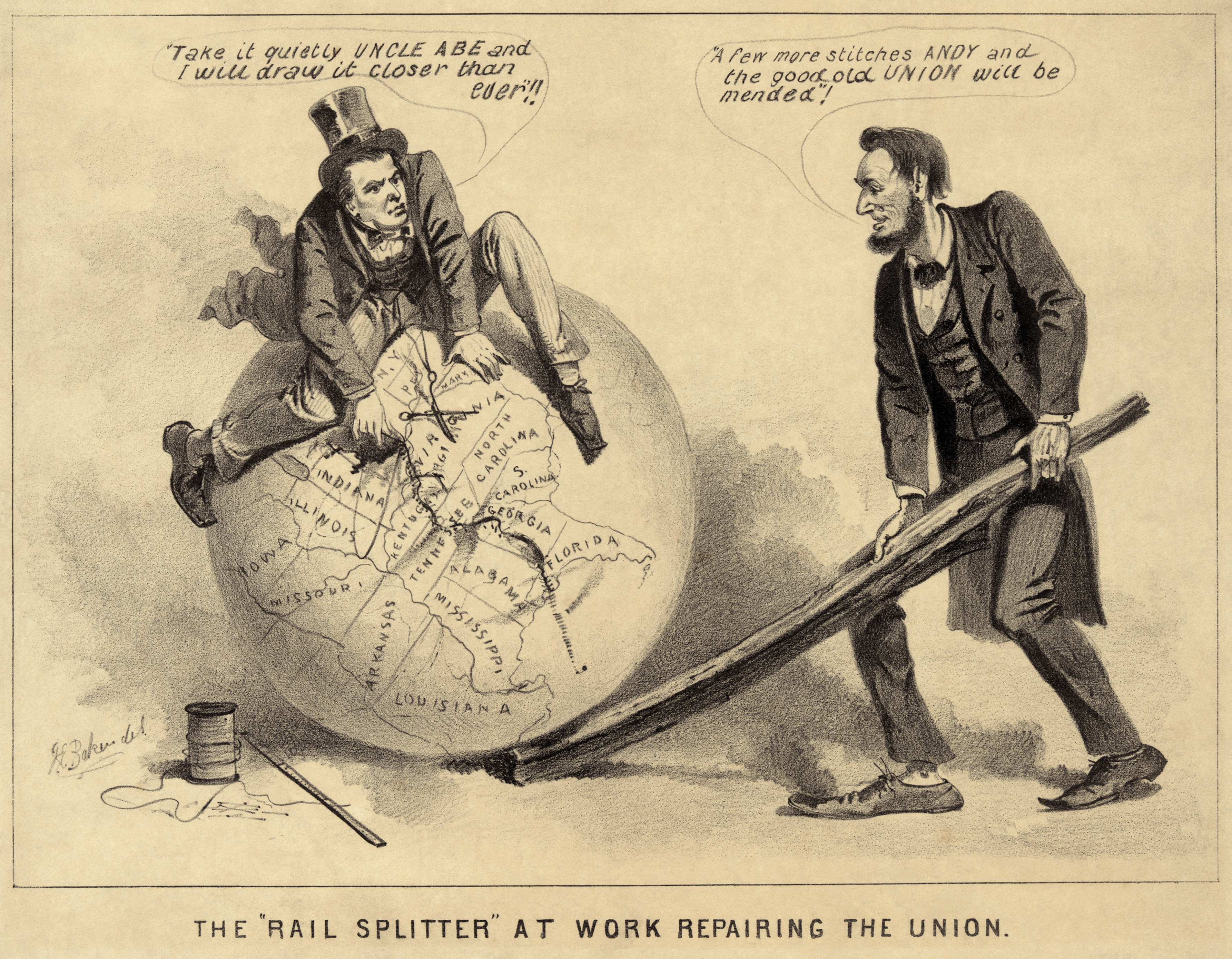THE TENNESSEE STATE HALL OF FAME


The stress over slavery and states’ rights came to a head following Abraham Lincoln’s victory in the Presidential Election of 1860. He was not on the ballot in Tennessee. Favorite son John Bell won the state with a plurality of the popular vote, just under 48%. On December 20, 1860, South Carolina seceded from the Union. Ultimately, eleven states seceded and joined the Confederate States of America. Tennessee was the last state to secede, June 1861, and the first to reenter the Union, July 1866.
Tennesseans served on both sides in the Civil War, 187,000 in the Confederate forces and 51,000 in the Union forces. Tennessee saw more battles during the war than any other state with the exception of Virginia. The first major Confederate defeats came in early 1862, when Forts Henry and Donelson fell to the Union troops commanded by General Ulysses S. Grant.

Next, Clarksville surrendered, and then the Confederate troops pulled out of Nashville. Andrew Johnson, who had been a U.S. Senator from Tennessee and remained loyal to the Union, was appointed Military Governor of Tennessee while forces still clashed in the state. He arrived in Nashville in March of 1862. Shiloh was the scene of a major battle April 6-7, 1862. This was another Union victory. It cost almost 25,000 casualties and was the first battle in the Western hemisphere to have over 100,000 participants. The Battle of Stones River, December 31, 1862-January 2, 1863, saw each side lose about 13,000 men. Other major battles were those of Knoxville, Franklin and Nashville.

President Lincoln issued the Emancipation Proclamation in 1862, with an effective date of January 1, 1863. Tennessee was exempted, inasmuch as the state was no longer in a state of rebellion.
Several Tennesseans were outstanding leaders on both sides, but the most famous was Nathan Bedford Forrest who led Confederate cavalry forces. His daring exploits included one operation in 1862, at Murfreesboro when he defeated and captured a larger Union force. Forrest, however, had a checkered career. After the war, he had a leadership role in the Ku Klux Klan.
The war ended in 1865, President Lincoln was assassinated, and Andrew Johnson, a Tennessean, became President. The end of the war brought Reconstruction as elements in the U.S. Government sought to rebuild the South and penalize those who had rebelled. That same year saw the Thirteenth Amendment to the U.S. Constitution, which prohibited slavery throughout the country.

Tennessee was the first state to be restored to the Union after ratifying the Fourteenth Amendment in 1866. This amendment granted citizenship to all persons born or naturalized in the United States of America, including blacks. In 1867, Tennessee became the first Southern state to allow black men to vote.
Black men and women saw Reconstruction as the God-sent opportunity to correct the damage done by slavery. They sought to acquire rights and privileges heretofore denied them. They took surnames, held weddings to legitimize unions made under slave conditions, built their own cabins and established black churches with black pastors. They sought to live in separate black communities supported by black fraternal organizations such as the Nashville Colored Benevolent Society and the Sons of Ham. They looked for economic independence with the freedom to change jobs and negotiate wages. Education was cherished by some as essential for equality.
President Lincoln had advocated reconciliation, and President Johnson tended to pursue the same policy, but radical Republicans in Congress wanted stricter measures, and the state legislature complied by trying to restrict the right to vote for those who had rebelled. On the other hand, Southerners who had taken an oath of allegiance to the Union after the war saw no reason for discrimination.

Ultimately, white Southerners did regain control and brought back discrimination against blacks. White Southerners managed to construct a one-party, Democratic, solid South that endured for decades—the “Jim Crow South.”
But Reconstruction of the defeated South was not the only important development going on in the country after the Civil War. The Granger movement began in Washington, D.C. This was a fraternal society that aimed to counter hard times, high railroad shipping rates and tight money. It took root in Minnesota but later spread across the country to other agricultural regions including Tennessee. It marked the beginning of an aggressive and self-conscious effort by the nation’s farmers to define their problems in economic terms and to address those problems through economic and political action. The National Woman Suffrage Association called for a Constitutional Amendment in 1869, to allow women to vote. This idea was to have a powerful influence in later years across the nation, including Tennessee. Vanderbilt University was founded in 1873, and in 1876, Nashville’s Meharry Medical College opened its doors. This was the first medical school in the South for blacks. Fisk University had opened its doors earlier, in 1866, primarily for freed slaves.
Reconstruction ended in 1877, when federal troops ceased occupation of the former Confederate States.
References:
Bergeron, Paul H., Stephen V. Ash and Jeanette Keith. Tennesseans and Their History. Knoxville: The University of Tennessee. 2007.
Kennedy, Francis H. ed. The Civil War Battlefield Guide. Sponsored by The Conservation Fund. Boston, MA: Houghton Miflin Co. 1991.
Van West, Carroll, Ed.-in-Chief. The Tennessee Encyclopedia of History and Culture. Nashville: Tennessee Historical Society, Rutledge Hill Press. 1998.
Winn, Thomas Howard. “Time-Line – 1780-1984 – U.S. – Tennessee – Clarksville-Montgomery County.” (Austin Peay State University, Working Document. 1984.